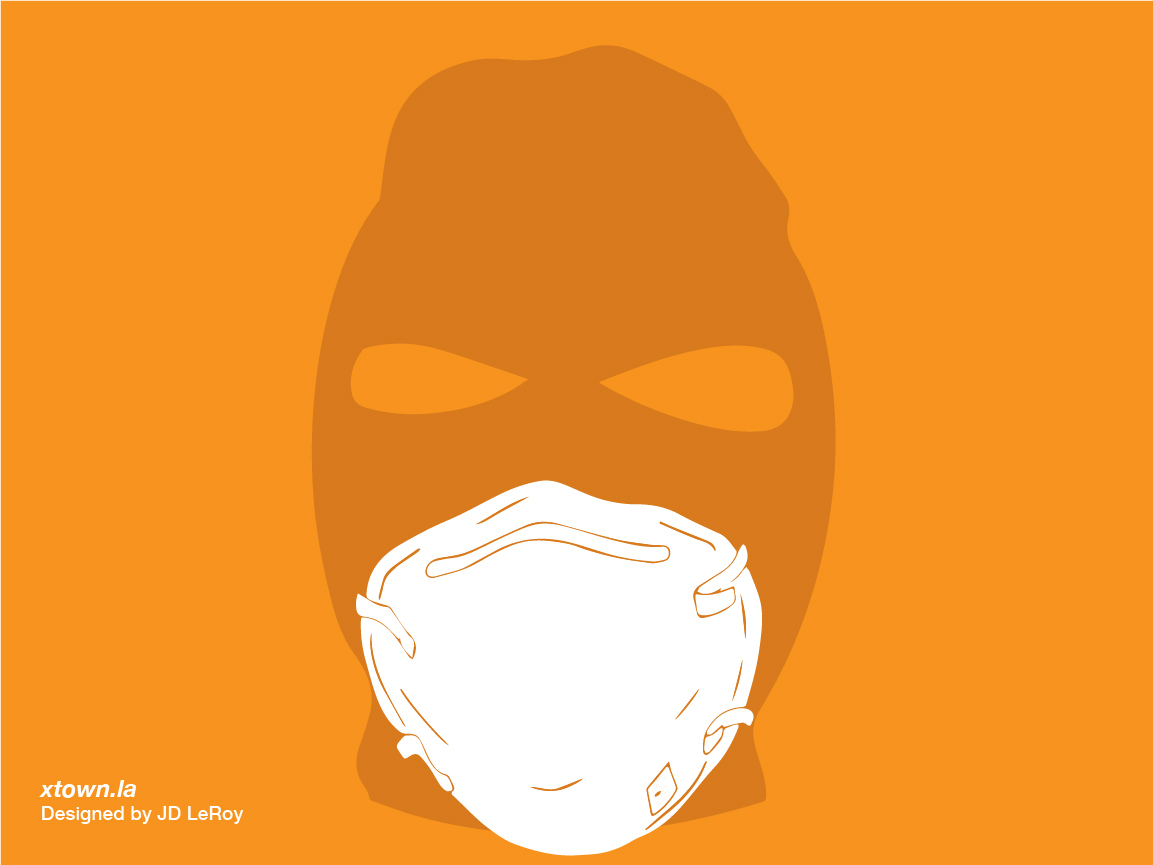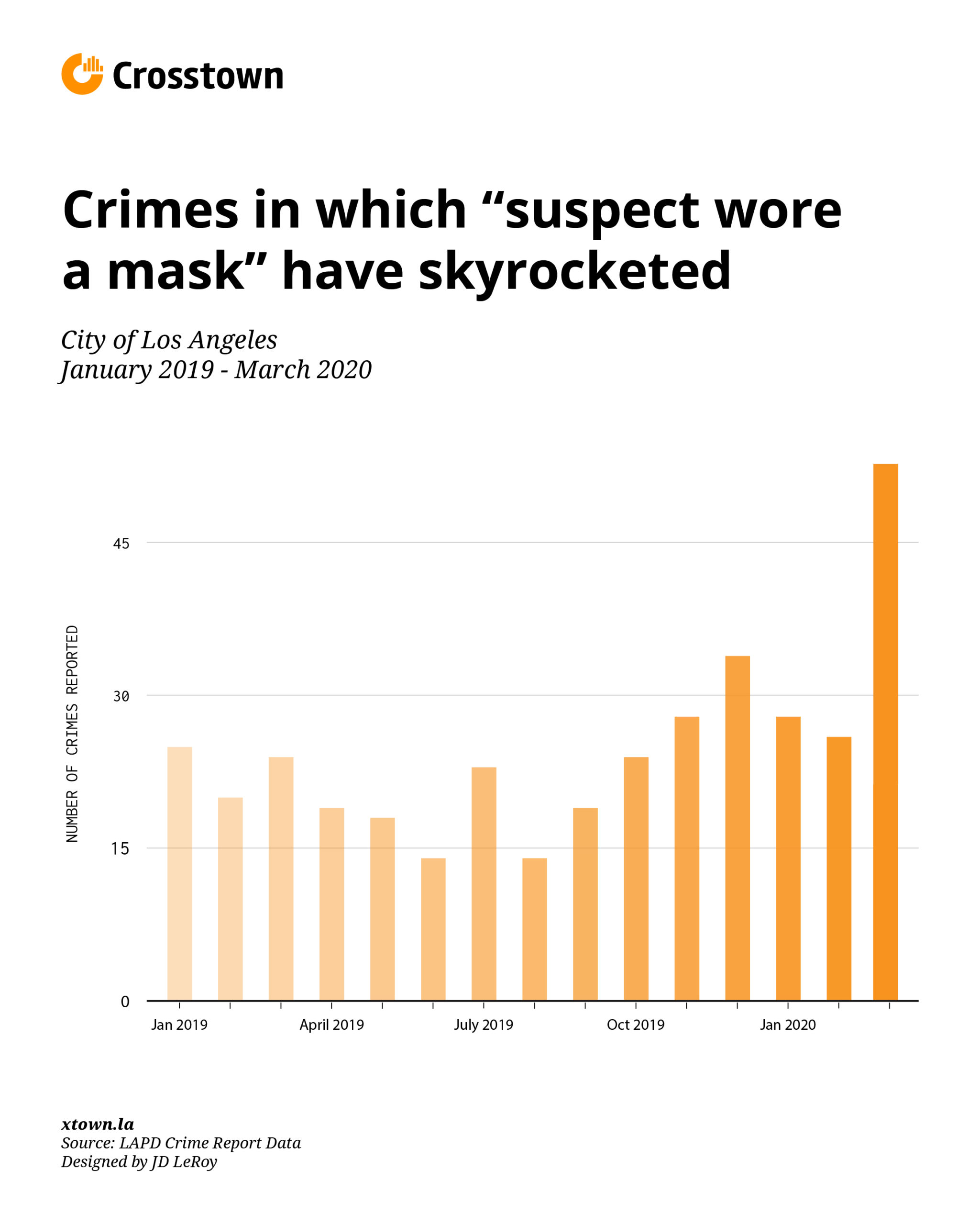Everyone’s wearing a mask, so is everyone a suspect?

In February, if you entered a bank wearing a mask, customers might have scattered. Today, they’d flee if you weren’t wearing one.
In fact, the number of mask-wearing suspects has skyrocketed. In March, the Los Angeles Police Department listed 53 crimes in which the “suspect wore a mask,” the most it has recorded per month in over a decade, and more than double the monthly average.
It’s just one way in which COVID-19 precautions have flipped the tables on crime patterns –– and just about everything else –– across the city.
The jump in crime suspects hiding behind a mask coincides with one the sharpest declines in overall crime ever recorded.
During the last two weeks of March, the City of Los Angeles had a 41% drop in crime when compared to the same time in 2019.
Of course, it is suddenly much more difficult to figure out who might be the crime suspect now. A new city order instituted on Friday advised Angelenos to wear face coverings when going out for essentials. People are getting creative, from wearing bandannas to fashioning cloth masks based on online tutorials.
In all of 2019, the LAPD logged only 262 crimes with the code for “suspect wore a mask.” But during the first three months of this year there have already been 127 of them.

Crimes at a drive-through
Picking up fast food from your car used to be a pretty predictable activity. Drive up, order, pay, get food. There were only 170 reports of crimes taking place at a drive-through since the LAPD started making its data available in 2010. Maybe that’s no more. In March alone there were seven reported crimes at a drive-through, the second-highest month ever recorded. In February there was just one and a total of 17 for all of 2019.
Victim was a delivery person
Delivery people are “essential workers.” How else are you supposed to get toilet paper and cocktails? But they are also now showing up in crime data as victims. The cases are still few. But as Amazon and Instacart orders soar, the number of crimes in which the victim was described as a delivery person hit 10 in March, up from only six in February and five in January. That’s the highest since Dec. 2010.
How we did it: We examined publicly available LAPD crime data, looking at specific codes that appeared in March 2020. LAPD officers tag most crime reports in their system with MO codes, for “modus operandi,” Latin for operating method or style. The MO codes are shorthand for describing what happened in a crime incident.
LAPD data only reflects crimes that are reported to the department, not how many crimes actually occurred. In making our calculations, we rely on data the agencies make publicly available.
The LAPD does periodically update past crime reports with new information, which sometimes leads them to recategorize past reports. Those revised reports do not always automatically become part of the public database. We try to update our reporting when new data becomes available.
Want to know how your neighborhood is faring? Or simply just interested in our data? Email us at askus@xtown.la.






